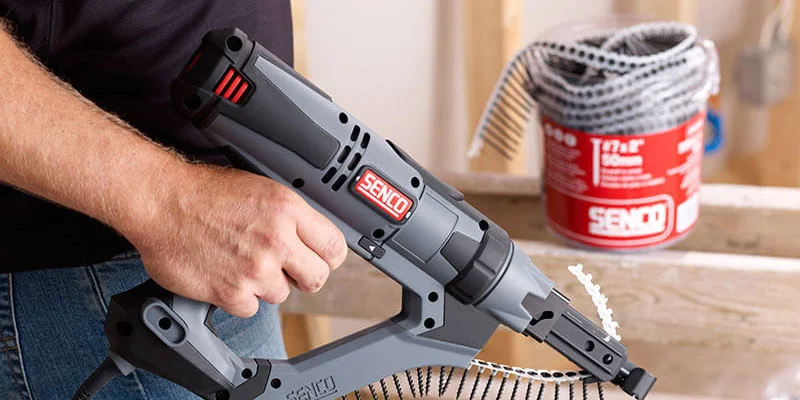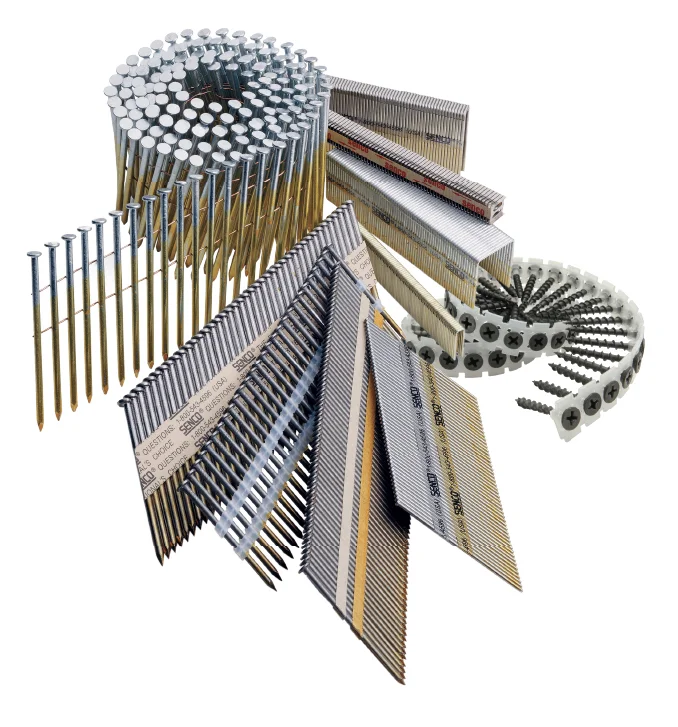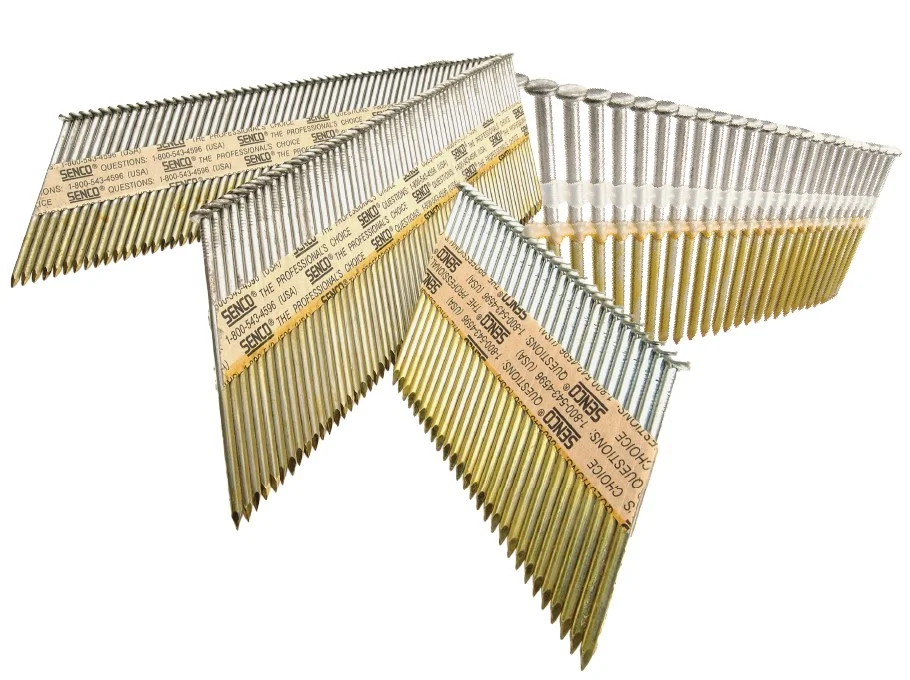3 Keys to Drywall Done Right

As the near universal standard for covering wood-stud walls, drywall may seem like a straightforward project. There are, however some mistakes people make with drywall screws. Selecting the wrong ones can cause future drywall pops. Over-driving them can lead to weakened joints. Beyond these damaging errors, there’s also the question whether you’re being as productive as possible during installation.
Choosing the right drywall screw
Nearly all drywall screws available are #6, the measure of the diameter of their threaded area, but their length varies depending on how you plan to use them.
- Most common — 1-1/4”: Use 1-1/4” drywall screws to secure 1/2″ drywall installed on wood-stud walls. These coarse-thread screws typically feature phosphate coatings, which better protect against rust compared to zinc coatings. Both gray and black phosphate coatings are common, but SENCO uses gray for its product line because it’s less likely to stain due to the oil used in black phosphate.
- Less common — 1-5/8”: To prevent sags, thicker drywall measuring 5/8” is used on ceilings. To secure that added weight, use #6 screws measuring 1-5/8” to allow 1-inch penetration into the wood.
Longer drywall screws, such as 2” and 2-1/2” are also available. They are used where multiple thicknesses of drywall are needed to achieve fire ratings, such as in multi-family homes and condos.
Automatic for all people
Now that you have the proper screws, what’s the best tool for attaching drywall? Simply put, auto-feed screw systems. These have become increasingly popular both on the job site and with DIY’ers to save time and prevent the common problems caused by loose screws.
RSMeans, the leading provider of construction cost data, studied SENCO’s Duraspin auto-feed systems, which are four times faster than screw guns and feature a 5,000-RPM model specifically for drywall installation. RSMeans found the SENCO auto-feed systems increased job-site productivity by 31 percent compared to traditional screw guns. In constructing a typical home, that increased productivity translates to over $600 in savings.
Because they sense depth, Duraspin auto-feed systems also give you a perfect drive every time, for unmatched consistency. With traditional tools, you can over-drive screws, ripping holes in drywall’s gypsum material and weakening the joints. Meanwhile, under-driving screws adds extra time as you mud over those mistakes. Depth of drive is critical, and auto-feed systems offer the most precise performance.
Auto-feed systems also offer benefits beyond productivity and precision.
- Clean-up is easy, since you won’t drop screws.
- You won’t deal with metal shavings in your fingers, since you don’t touch the screws nearly as much.
- As construction companies cope with the shrinking labor pool, auto-feed systems are critical because they require little training. Workers on their first day can be as productive as experienced hands.
No more rookie mistakes
With the correct screws and auto-feed systems, you’ll avoid these common mistakes.
- Right length, wrong screw: Make certain you choose the correct #6, 1-1/4” drywall screw, as that’s also a common measurement for screws that attach drywall to light gauge steel. Drywall-to-wood screws feature coarse threads, unlike the light gauge steel screws that have fine threads.
- Drywall only, please: Don’t use drywall screws for sub-floors, tile backing or other non-drywall applications. These denser materials can break the smaller #6 screw during installation. Use a #8 or larger for these jobs.
- Secure those ceilings: Don’t use 1-1/4” drywall screws on ceilings or you risk a weak connection.
- Too few or too many: Follow the drywall manufacturer’s instructions on the number of screws to use. Too few causes obvious issues, while too many means more mudding.
- Precision drives: Be careful how far you drive the screws if using a drill. Otherwise, you’ll weaken joints by over-driving or be mudding even more by under-driving.
SENCO drywall screws use intuitive product codes to ensure you pick the right screw every time.
- 00A000AA: The first two characters indicate shank size. For drywall, it’s almost always 06 for #6.
- 00A000AA: The third character indicates application. Drywall to wood is ‘A,’ drywall to light gauge steel is ‘B’ and drywall to heavy gauge steel is ‘C.’
- 00A000AA: The fourth, fifth and sixth characters are length. The common 1-1/4” screws will be coded 125.
- 00A000AA: This character indicates coating. For drywall, use ‘P’ for phosphate.
- 00A000AA: The final character indicates the quantity of screws. No letter at all means a tub of 1,000 while boxes of 1,000 are ‘K’ and 4,000 are ‘B.”
Find your local SENCO dealer at https://www.senco.com/find-a-dealer/.

